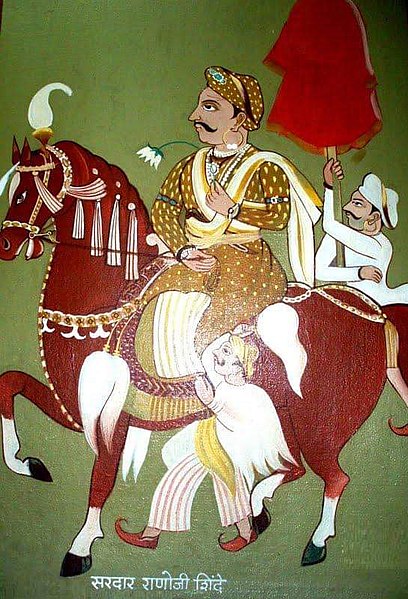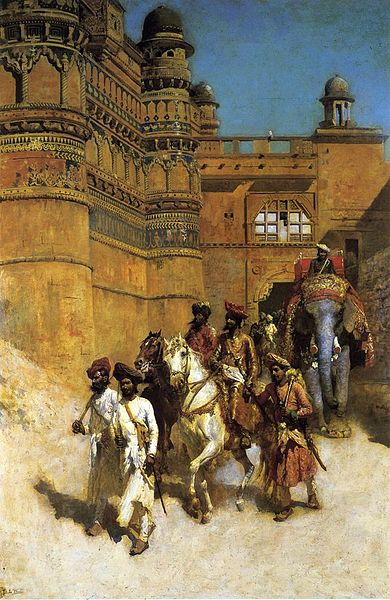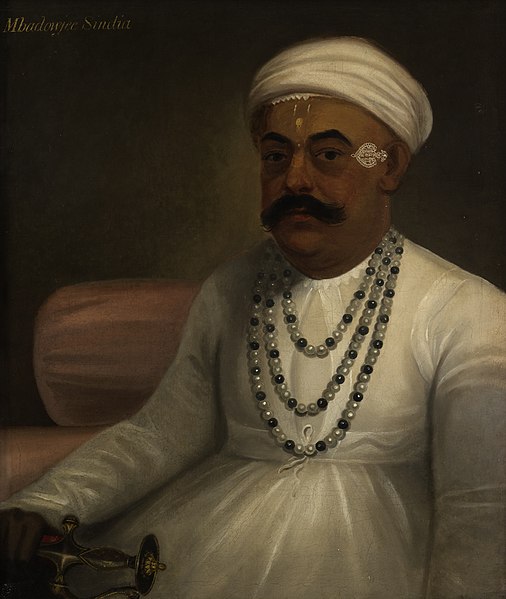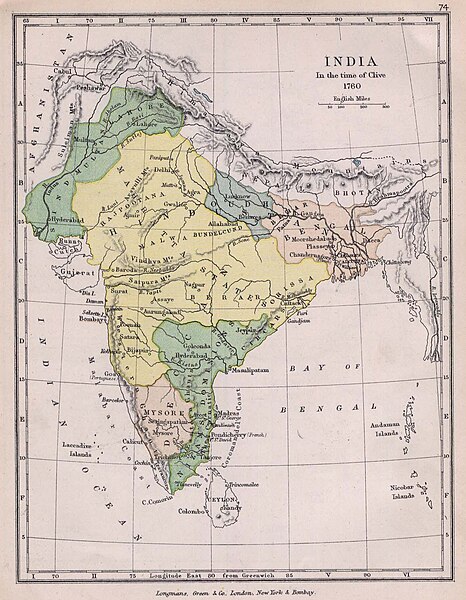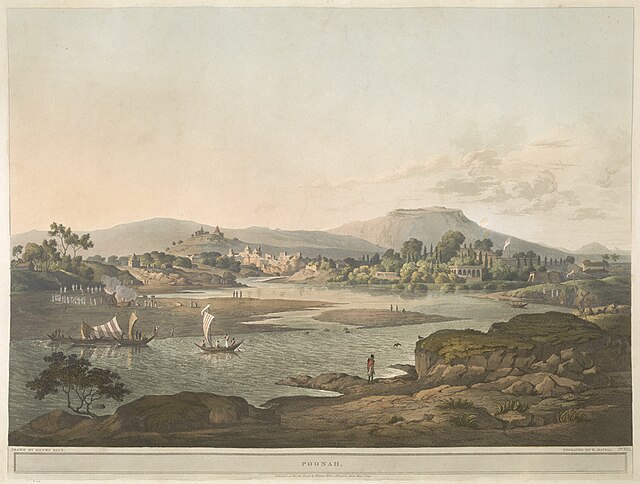House of Scindia is a Hindu Maratha Royal House that ruled the erstwhile Gwalior State in central India. It had the Patil-ship of Kanherkhed in the district of Satara and was founded by Ranoji Shinde, who started as a personal servant of the Peshwa Bajirao I. Ranoji and his descendants, along with their rivals the Holkars, played a leading role during the Maratha ascendancy in northern India in the 18th-century. The Gwalior State became a princely state during the British Raj in the 19th and the 20th-centuries. After India's independence in 1947 and the abolition of princely states, several members of the Scindia (Shinde) family went on to enter Indian politics.
Maratha Sardar Ranoji Scindia
The Maharaja of Gwalior Before His Palace
Shinde Chhatri, Wanawdi, Pune: A memorial dedicated to Mahadji Shinde
Mahadaji Shinde was instrumental in resurrecting Maratha power in North India after the Battle of Panipat in 1761
The Marathi people or Marathis are an Indo-Aryan ethnolinguistic group who are native to Maharashtra in western India. They natively speak Marathi, an Indo-Aryan language. Maharashtra was formed as a Marathi-speaking state of India on May 1, 1960, as part of a nationwide linguistic reorganisation of the Indian states. The term "Maratha" is generally used by historians to refer to all Marathi-speaking peoples, irrespective of their caste; However, it may refer to a Maharashtrian caste known as the Maratha.
Territory under Maratha control in 1760 (yellow), with its vassals
A watercolor painting of Pune from the late Peshwa era as seen from the confluence of the Mula and Mutha rivers, by British artist Henry Salt. The picture clearly shows the permanent features of the place and cremations. River confluences have been popular in Hinduism for cremations and also for ceremonial disposal of ashes
B. R. Ambedkar, a polymath and Social reformer
Sayajirao Gaekwad III, the Maratha Maharaja of Baroda

